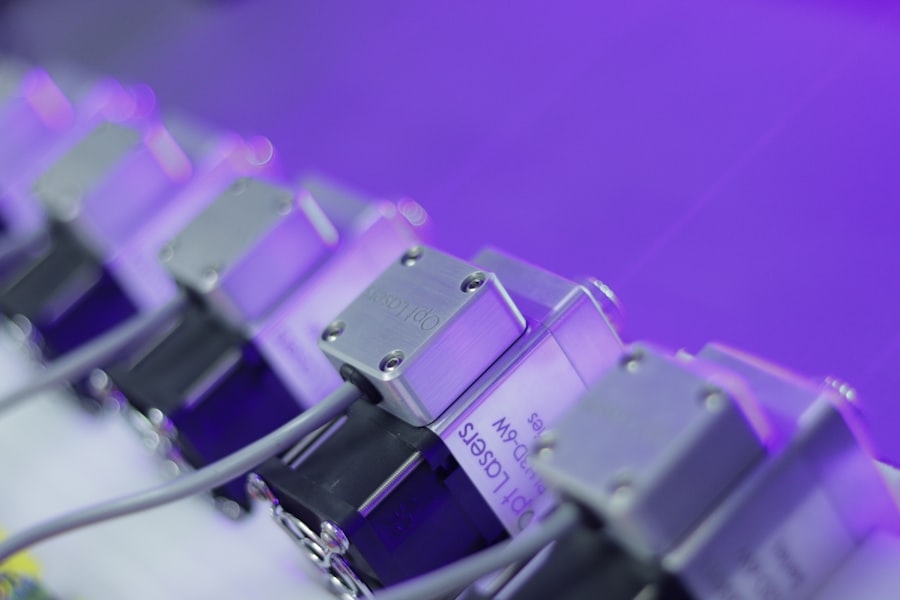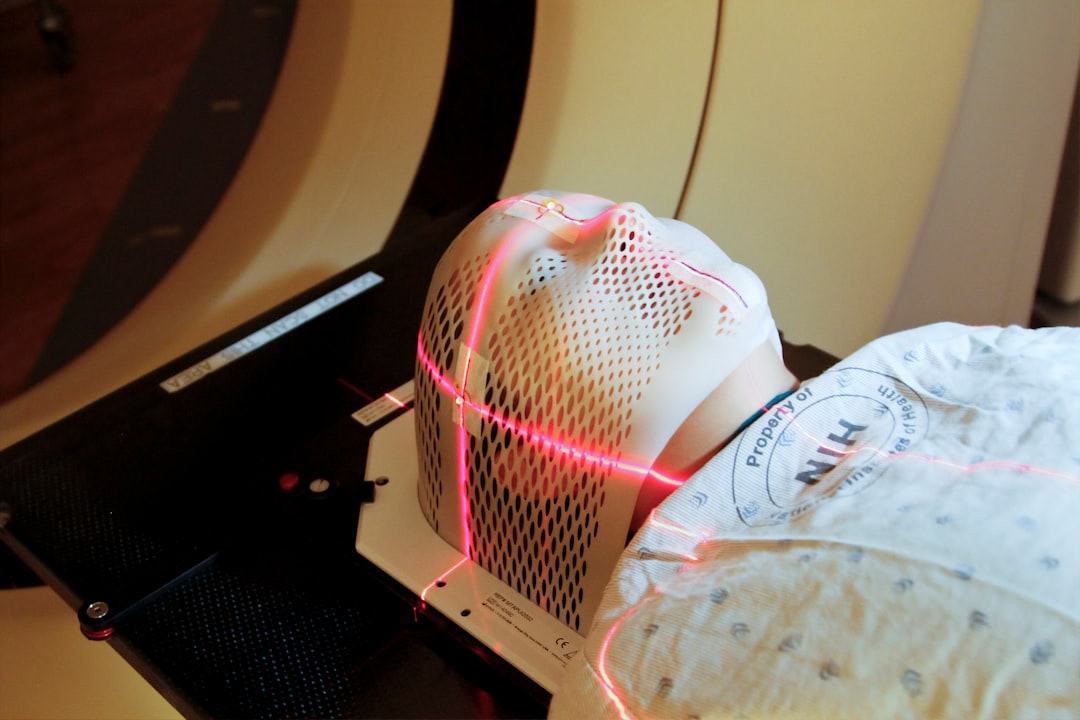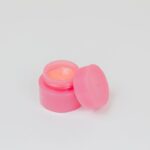Laser hair removal is a popular cosmetic procedure that uses concentrated beams of light to remove unwanted hair. The process involves targeting the hair follicles with the laser, which damages them and inhibits future hair growth. It is important to understand that laser hair removal is not a one-time treatment and typically requires multiple sessions to achieve the desired results. The number of sessions needed can vary depending on factors such as the area being treated, the thickness of the hair, and the individual’s skin type.
During the treatment, the technician will use a handheld device to deliver the laser pulses to the targeted area. The sensation can be described as a mild stinging or snapping feeling, but most people find it tolerable. It is important to note that laser hair removal is not completely painless, but the discomfort is usually minimal and temporary. After each session, you may experience some redness and swelling in the treated area, but these side effects typically subside within a few hours to a few days.
It is also important to understand that laser hair removal is not effective for everyone. The treatment works best on individuals with light skin and dark hair, as the contrast makes it easier for the laser to target the hair follicles. People with darker skin tones may require more sessions and are at a higher risk of experiencing pigmentation changes or burns. Additionally, laser hair removal is not effective on blonde, red, or gray hair, as the laser cannot effectively target these lighter hair colors. Overall, it is important to have realistic expectations about the process and results of laser hair removal.
Key Takeaways
- Laser hair removal is a process that requires multiple sessions for optimal results
- Look for a qualified and experienced technician for safe and effective treatment
- Shave the treatment area before your session and avoid sun exposure
- Use gentle skincare products and avoid sun exposure after treatment
- Consider using numbing creams or cooling devices to minimize discomfort during treatment
- Understand that laser hair removal results in permanent hair reduction, not complete removal
- Follow up with maintenance sessions as needed to keep your skin smooth and hair-free
Choosing the Right Professional: Finding a Qualified Laser Hair Removal Technician
When considering laser hair removal, it is crucial to find a qualified and experienced technician to perform the treatment. A reputable technician should have proper training and certification in laser hair removal procedures. It is important to do thorough research and ask for recommendations from friends or family who have undergone laser hair removal. Additionally, you can check online reviews and ratings for local technicians to ensure they have a good reputation.
Before scheduling a treatment, it is essential to have a consultation with the technician to discuss your goals, expectations, and any concerns you may have. During the consultation, the technician should assess your skin type and hair color to determine if you are a suitable candidate for laser hair removal. They should also explain the process in detail, including the number of sessions needed, potential side effects, and aftercare instructions.
It is also important to ensure that the technician uses FDA-approved laser devices and follows strict hygiene and safety protocols. The facility should be clean and well-maintained, and the technician should provide protective eyewear for both themselves and the client during the treatment. Overall, choosing the right professional for laser hair removal is crucial for achieving safe and effective results.
Preparing for Treatment: How to Get Ready for Your Laser Hair Removal Session
Before your laser hair removal session, there are several steps you can take to prepare for the treatment. It is important to avoid sun exposure and tanning beds for at least six weeks before your appointment, as tanned skin can increase the risk of pigmentation changes or burns during the treatment. Additionally, you should avoid plucking, waxing, or electrolysis for at least six weeks prior to your session, as these methods can disturb the hair follicles and interfere with the effectiveness of the laser treatment.
On the day of your appointment, it is best to shave the treatment area beforehand to ensure that the laser can effectively target the hair follicles. It is important to avoid using any lotions, creams, or deodorants on the skin before your session, as these products can interfere with the laser’s ability to penetrate the skin. You should also wear loose-fitting clothing to your appointment to ensure comfort during the treatment.
It is normal to feel some anxiety before your first laser hair removal session, but it is important to remember that the procedure is safe and effective when performed by a qualified professional. Taking these preparatory steps can help ensure that you have a successful and comfortable experience during your laser hair removal treatment.
Aftercare Tips: Caring for Your Skin After Laser Hair Removal
| Aftercare Tips | Details |
|---|---|
| Apply Aloe Vera | Apply aloe vera gel to soothe and hydrate the treated area |
| Avoid Sun Exposure | Avoid direct sun exposure and use sunscreen to protect the treated area |
| Avoid Hot Showers | Avoid hot showers and baths for the first 24 hours after treatment |
| Avoid Exfoliation | Avoid exfoliating the treated area for at least a week |
| Moisturize Regularly | Keep the treated area moisturized to promote healing and prevent dryness |
After your laser hair removal session, it is important to take proper care of your skin to ensure optimal results and minimize any potential side effects. You may experience some redness and swelling in the treated area, which is normal and typically subsides within a few hours. To soothe any discomfort, you can apply a cold compress or aloe vera gel to the skin.
It is important to avoid sun exposure and tanning beds for at least two weeks after your treatment, as your skin may be more sensitive to UV rays during this time. You should also avoid hot showers, saunas, and strenuous exercise for 24-48 hours after your session to allow your skin to recover.
In the days following your treatment, it is important to keep the treated area clean and moisturized. You should avoid using any harsh exfoliants or scrubs on the skin, as this can irritate the area. It is also important to continue shaving the treated area as needed between sessions, but you should avoid plucking or waxing as this can disrupt the hair follicles.
Overall, following these aftercare tips can help ensure that your skin heals properly after laser hair removal and that you achieve the best possible results from your treatment.
Managing Pain and Discomfort: Tips for Minimizing Discomfort During Treatment
While laser hair removal is generally well-tolerated by most people, there are some tips you can follow to minimize any discomfort during your treatment. Many people describe the sensation of laser hair removal as similar to a rubber band snapping against the skin. While this sensation is usually tolerable, some people may find it uncomfortable.
One way to manage discomfort during your treatment is to apply a topical numbing cream to the treatment area before your session. This can help reduce any stinging or snapping sensations and make the treatment more comfortable. Additionally, taking an over-the-counter pain reliever such as ibuprofen before your appointment can help minimize any discomfort during the procedure.
It is also important to communicate openly with your technician during your treatment. If you are experiencing significant discomfort, they can adjust the settings on the laser device or take breaks as needed to ensure your comfort. Overall, following these tips can help minimize any pain or discomfort during your laser hair removal sessions.
Setting Realistic Expectations: Understanding the Results of Laser Hair Removal

It is important to have realistic expectations about the results of laser hair removal. While many people experience significant reduction in hair growth after their treatments, it is unlikely that you will achieve complete hair removal after just one session. Laser hair removal typically requires multiple sessions spaced several weeks apart to achieve optimal results.
After each session, you may notice that your hair grows back finer and lighter than before. Over time, with each subsequent session, you will likely see a reduction in both the thickness and density of the hair in the treated area. However, it is important to understand that some hair may never be completely eliminated, and maintenance sessions may be needed to keep unwanted hair at bay.
It is also important to understand that individual results can vary depending on factors such as skin type, hair color, and hormonal changes. While some people may achieve long-term hair reduction after their initial sessions, others may require ongoing maintenance treatments to maintain smooth, hair-free skin. Overall, setting realistic expectations about the results of laser hair removal can help ensure that you are satisfied with your treatment outcomes.
Long-Term Maintenance: Tips for Maintaining Smooth, Hair-Free Skin
After completing your initial series of laser hair removal sessions, it is important to follow some long-term maintenance tips to keep your skin smooth and hair-free. It is normal for some hair regrowth to occur over time, so periodic maintenance treatments may be necessary to maintain your results.
It is important to follow any aftercare instructions provided by your technician after each session, including avoiding sun exposure and using gentle skincare products on the treated area. Additionally, it is important to continue shaving the treated area between sessions as needed, but you should avoid plucking or waxing as this can disrupt the hair follicles.
It is also important to communicate openly with your technician about any changes in your skin or hair growth over time. They can help determine if additional maintenance treatments are needed and adjust their approach as necessary based on your individual needs.
Overall, following these long-term maintenance tips can help ensure that you maintain smooth, hair-free skin after completing your initial series of laser hair removal sessions.
If you’re considering laser hair removal for the first time, it’s important to be well-informed about the process and what to expect. In a recent article on inlaserhairremoval.com, first-time patients share their experiences and tips for a successful laser hair removal treatment. From understanding the cost of full-face laser hair removal to learning about pricing per treatment, this article provides valuable insights that can help you make informed decisions before embarking on your own laser hair removal journey.
FAQs
What is laser hair removal?
Laser hair removal is a cosmetic procedure that uses a concentrated beam of light (laser) to remove unwanted hair. The laser targets the pigment in the hair follicles, damaging them and inhibiting future hair growth.
How does laser hair removal work?
During the procedure, the laser emits a light that is absorbed by the pigment in the hair follicles. This damages the follicles and inhibits future hair growth. Multiple sessions are usually required to achieve long-term hair reduction.
Is laser hair removal safe?
When performed by a qualified and experienced professional, laser hair removal is generally considered safe. However, there are some potential risks and side effects, such as skin irritation, redness, and changes in skin pigmentation. It’s important to discuss any concerns with a healthcare provider before undergoing the procedure.
What areas of the body can be treated with laser hair removal?
Laser hair removal can be used to treat unwanted hair on various areas of the body, including the face, legs, arms, underarms, bikini line, and back. It is important to consult with a professional to determine the best approach for each specific area.
How should I prepare for laser hair removal?
Before undergoing laser hair removal, it is important to avoid sun exposure and tanning beds, as well as plucking, waxing, or electrolysis, for at least six weeks prior to the procedure. Shaving is typically allowed and recommended before the treatment.
What can I expect during and after the laser hair removal procedure?
During the procedure, the area to be treated will be cleaned and a cooling gel may be applied. The laser will then be used to target the hair follicles. After the procedure, the treated area may be red and sensitive, and it is important to follow post-treatment care instructions provided by the healthcare provider. Multiple sessions are usually required for optimal results.






